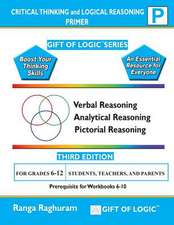CompTIA Data+ Study Guide: Exam DA0–001: Sybex Study Guide
Autor M Chappleen Limba Engleză Paperback – 22 mai 2022
Din seria Sybex Study Guide
- 20%
 Preț: 204.34 lei
Preț: 204.34 lei - 20%
 Preț: 204.48 lei
Preț: 204.48 lei -
 Preț: 416.00 lei
Preț: 416.00 lei - 20%
 Preț: 204.15 lei
Preț: 204.15 lei -
 Preț: 260.97 lei
Preț: 260.97 lei - 20%
 Preț: 272.31 lei
Preț: 272.31 lei - 20%
 Preț: 467.73 lei
Preț: 467.73 lei - 20%
 Preț: 343.55 lei
Preț: 343.55 lei - 20%
 Preț: 205.15 lei
Preț: 205.15 lei - 20%
 Preț: 289.38 lei
Preț: 289.38 lei - 20%
 Preț: 272.52 lei
Preț: 272.52 lei - 20%
 Preț: 304.02 lei
Preț: 304.02 lei -
 Preț: 351.32 lei
Preț: 351.32 lei -
 Preț: 404.31 lei
Preț: 404.31 lei - 20%
 Preț: 175.26 lei
Preț: 175.26 lei -
 Preț: 325.22 lei
Preț: 325.22 lei -
 Preț: 288.65 lei
Preț: 288.65 lei -
 Preț: 383.42 lei
Preț: 383.42 lei - 20%
 Preț: 399.67 lei
Preț: 399.67 lei - 8%
 Preț: 439.48 lei
Preț: 439.48 lei -
 Preț: 427.33 lei
Preț: 427.33 lei - 8%
 Preț: 365.36 lei
Preț: 365.36 lei - 8%
 Preț: 441.16 lei
Preț: 441.16 lei - 20%
 Preț: 274.58 lei
Preț: 274.58 lei -
 Preț: 322.04 lei
Preț: 322.04 lei -
 Preț: 410.24 lei
Preț: 410.24 lei - 20%
 Preț: 298.45 lei
Preț: 298.45 lei - 20%
 Preț: 274.41 lei
Preț: 274.41 lei -
 Preț: 257.89 lei
Preț: 257.89 lei - 20%
 Preț: 289.17 lei
Preț: 289.17 lei - 20%
 Preț: 309.98 lei
Preț: 309.98 lei - 20%
 Preț: 221.89 lei
Preț: 221.89 lei - 20%
 Preț: 408.48 lei
Preț: 408.48 lei - 20%
 Preț: 276.82 lei
Preț: 276.82 lei - 20%
 Preț: 278.23 lei
Preț: 278.23 lei -
 Preț: 326.42 lei
Preț: 326.42 lei - 20%
 Preț: 224.76 lei
Preț: 224.76 lei -
 Preț: 294.97 lei
Preț: 294.97 lei -
 Preț: 291.72 lei
Preț: 291.72 lei -
 Preț: 321.94 lei
Preț: 321.94 lei - 20%
 Preț: 281.57 lei
Preț: 281.57 lei - 20%
 Preț: 251.37 lei
Preț: 251.37 lei -
 Preț: 324.94 lei
Preț: 324.94 lei - 20%
 Preț: 308.58 lei
Preț: 308.58 lei -
 Preț: 432.32 lei
Preț: 432.32 lei -
 Preț: 407.96 lei
Preț: 407.96 lei - 20%
 Preț: 286.59 lei
Preț: 286.59 lei -
 Preț: 340.54 lei
Preț: 340.54 lei - 20%
 Preț: 280.68 lei
Preț: 280.68 lei
Preț: 322.04 lei
Nou
Puncte Express: 483
Preț estimativ în valută:
61.62€ • 64.34$ • 51.00£
61.62€ • 64.34$ • 51.00£
Carte disponibilă
Livrare economică 15-29 martie
Livrare express 01-07 martie pentru 42.11 lei
Preluare comenzi: 021 569.72.76
Specificații
ISBN-13: 9781119845256
ISBN-10: 1119845254
Pagini: 368
Dimensiuni: 192 x 237 x 21 mm
Greutate: 0.61 kg
Editura: Sybex
Seria Sybex Study Guide
Locul publicării:Hoboken, United States
ISBN-10: 1119845254
Pagini: 368
Dimensiuni: 192 x 237 x 21 mm
Greutate: 0.61 kg
Editura: Sybex
Seria Sybex Study Guide
Locul publicării:Hoboken, United States
Cuprins
Introduction xv
Assessment Test xxii
Chapter 1 Today's Data Analyst 1
Welcome to the World of Analytics 2
Data 2
Storage 3
Computing Power 4
Careers in Analytics 5
The Analytics Process 6
Data Acquisition 7
Cleaning and Manipulation 7
Analysis 8
Visualization 8
Reporting and Communication 8
Analytics Techniques 10
Descriptive Analytics 10
Predictive Analytics 11
Prescriptive Analytics 11
Machine Learning, Artificial Intelligence, and Deep Learning 11
Data Governance 13
Analytics Tools 13
Summary 15
Chapter 2 Understanding Data 17
Exploring Data Types 18
Structured Data Types 20
Unstructured Data Types 31
Categories of Data 36
Common Data Structures 39
Structured Data 39
Unstructured Data 41
Semi-structured
Data 42
Common File Formats 42
Text Files 42
JavaScript Object Notation 44
Extensible Markup Language (XML) 45
HyperText Markup Language (HTML) 47
Summary 48
Exam Essentials 49
Review Questions 51
Chapter 3 Databases and Data Acquisition 57
Exploring Databases 58
The Relational Model 59
Relational Databases 62
Nonrelational Databases 68
Database Use Cases 71
Online Transactional Processing 71
Online Analytical Processing 74
Schema Concepts 75
Data Acquisition Concepts 81
Integration 81
Data Collection Methods 83
Working with Data 88
Data Manipulation 89
Query Optimization 96
Summary 99
Exam Essentials 100
Review Questions 101
Chapter 4 Data Quality 105
Data Quality Challenges 106
Duplicate Data 106
Redundant Data 107
Missing Values 110
Invalid Data 111
Nonparametric data 112
Data Outliers 113
Specification Mismatch 114
Data Type Validation 114
Data Manipulation Techniques 116
Recoding Data 116
Derived Variables 117
Data Merge 118
Data Blending 119
Concatenation 121
Data Append 121
Imputation 122
Reduction 124
Aggregation 126
Transposition 127
Normalization 128
Parsing/String Manipulation 130
Managing Data Quality 132
Circumstances to Check for Quality 132
Automated Validation 136
Data Quality Dimensions 136
Data Quality Rules and Metrics 140
Methods to Validate Quality 142
Summary 144
Exam Essentials 145
Review Questions 146
Chapter 5 Data Analysis and Statistics 151
Fundamentals of Statistics 152
Descriptive Statistics 155
Measures of Frequency 155
Measures of Central Tendency 160
Measures of Dispersion 164
Measures of Position 173
Inferential Statistics 175
Confidence Intervals 175
Hypothesis Testing 179
Simple Linear Regression 186
Analysis Techniques 190
Determine Type of Analysis 190
Types of Analysis 191
Exploratory Data Analysis 192
Summary 192
Exam Essentials 194
Review Questions 196
Chapter 6 Data Analytics Tools 201
Spreadsheets 202
Microsoft Excel 203
Programming Languages 205
R 205
Python 206
Structured Query Language (SQL) 208
Statistics Packages 209
IBM SPSS 210
SAS 211
Stata 211
Minitab 212
Machine Learning 212
IBM SPSS Modeler 213
RapidMiner 214
Analytics Suites 217
IBM Cognos 217
Power BI 218
MicroStrategy 219
Domo 220
Datorama 221
AWS QuickSight 222
Tableau 222
Qlik 224
BusinessObjects 225
Summary 225
Exam Essentials 225
Review Questions 227
Chapter 7 Data Visualization with Reports and Dashboards 231
Understanding Business Requirements 232
Understanding Report Design Elements 235
Report Cover Page 236
Executive Summary 237
Design Elements 239
Documentation Elements 244
Understanding Dashboard Development Methods 247
Consumer Types 247
Data Source Considerations 248
Data Type Considerations 249
Development Process 250
Delivery Considerations 250
Operational Considerations 252
Exploring Visualization Types 252
Charts 252
Maps 258
Waterfall 264
Infographic 266
Word Cloud 267
Comparing Report Types 268
Static and Dynamic 268
Ad Hoc 269
Self-Service (On-Demand) 269
Recurring Reports 269
Tactical and Research 270
Summary 271
Exam Essentials 272
Review Questions 274
Chapter 8 Data Governance 279
Data Governance Concepts 280
Data Governance Roles 281
Access Requirements 281
Security Requirements 286
Storage Environment Requirements 289
Use Requirements 291
Entity Relationship Requirements 292
Data Classification Requirements 292
Jurisdiction Requirements 297
Breach Reporting Requirements 298
Understanding Master Data Management 299
Processes 300
Circumstances 301
Summary 303
Exam Essentials 304
Review Questions 306
Appendix Answers to the Review Questions 311
Chapter 2: Understanding Data 312
Chapter 3: Databases and Data Acquisition 314
Chapter 4: Data Quality 315
Chapter 5: Data Analysis and Statistics 317
Chapter 6: Data Analytics Tools 319
Chapter 7: Data Visualization with Reports and Dashboards 322
Chapter 8: Data Governance 323
Index 327
Notă biografică
ABOUT THE AUTHORS Mike Chapple, PhD, is Teaching Professor of IT, Analytics, and Operations at the University of Notre Dame. He's a technology professional and educator with over 20 years of experience. Mike provides certification resources at his website, CertMike.com. Sharif Nijim is Assistant Teaching Professor of IT, Analytics, and Operations in the Mendoza College of Business at the University of Notre Dame. He teaches undergraduate and graduate courses on cloud computing, business analytics, and information technology.
























